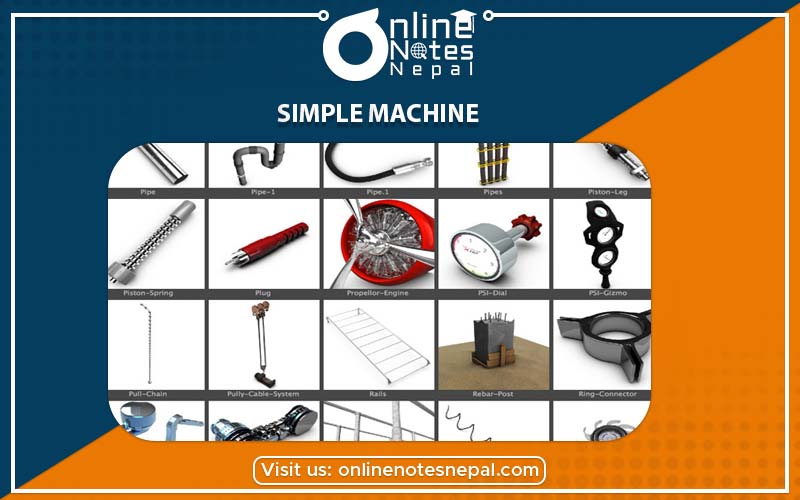Published by: BhumiRaj Timalsina
Published date: 24 Jan 2022

We use various types of machine in our daily life to perform various activities. These machines make our work easy and efficient. For example, we use a knife to chop vegetables, scissors to cut papers, beam balance to measure weight, bottle opener to open the bottle, etc. There are a simple machine and complex machine. Forceps, punching machine, crowbar, bottle opener, etc. are examples of the simple machine while motorcycle, truck, car, etc. are some examples of the complex machine. A simple machine is a device, which is simple in structure and makes our daily work easier, faster and more convenient.
Mainly, there are six types of simple machines, which are given below,
Lever is a type of simple machine that is used to lift the heavy loads. It is made of a rigid bar that moves about a fixed point called fulcrum. It consists of three parts, effort arm, fulcrum and load arm. Fulcrum is the point where rigid bar rotates. By applying effort in effort arm the load is lifted by the help of fulcrum. Effort arm is the distance between the fulcrum and the point where effort is applied and load arm is the distance between fulcrum and load where the load is kept. Input work is equal to output work in an ideal lever which is the balanced condition of the lever. It is the principle of the lever.
Levers are of three types depending upon the positions of fulcrum, load, and effort which are as follows,
A pulley is a simple machine consisting grooved circular disc and a rope. The rope passes over the circular disc. In pulley, a load is attached to one end of the rope while the effort is applied at the another end of the same rope. Here, the effort is applied in a convenient way which makes our work easier. There are two types of the pulley on the basis of their movements. They are as follows,
It consists of two cylinders having a different radius. Cylinder with a small radius is axle and cylinder with a large radius is a wheel. Formally, a rope is coiled in wheel and axle. The effort is applied in wheel and load in the axle. They move in the same manner but the distance covered is different due to the difference in radius. Since effort applied on the wheel is magnified so, by applying small effort on the wheel, heavy loads can be lifted. Some of the examples of wheel and axle are paddle of the bicycle, a drill used by carpenters, steering of vehicles, etc.
It is very difficult to load heavy things onto a truck or some area of a certain height. A huge effort is needed. In such case, the inclined plane is used. It is a sloping surface or a wooden plank. It multiplies the applied effort. It helps to push the heavy load upward easily. The winding road, staircase, ladder, etc. are the examples of an inclined plane.

A screw is an inclined plane wrapped around a nail. It consists of circular edges called thread. The pitch is the distance between two screw thread. The effort is applied to the head of the screw. It looks similar to nail and requires less effort to insert into the wood. Screw, nail, jack screw, etc.are some of the examples of the screw.Jack screw is used to lift the vehicles up to the certain height.


A wedge is a triangular shaped tool. Wedge consists of two or more sloping surfaces with one end sharp or pointed edge while the other one is a blunt edge. Here, the effort is applied at the blunt side. It is mainly used for cutting and splitting things, drilling holes etc. Some of the examples of wedges are axe, knife, nail, sickle, etc.